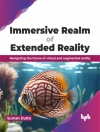This book proposes a novel body image to bridge gap between self-transformation and preserving sense of self: the Jizai body. Automation and digitization have served to transform our lives. Digital transformation, for example, is rapidly changing the world every day, making life more convenient and comfortable. However, there is a worrying trend of removing the human element from human-centric systems as technologies and algorithms become more capable. Leaving humanity behind, especially its corporal components, will leave persons unable to feel a sense of self in their newfound comfort. Despite the allure of an automated life, it is doubtful that the authors will find happiness without a sense of control. Exploring the essence of what makes us human from a physiological and psychological standpoint, the authors present a new perspective on what constitutes a body in this era where the real physical world and virtual information world coexist. The authors present state-of-the-art research which seeks to free humanity from its physical constraints and allow free control of both the natural and extended body. The next step in human evolution starts here.
表中的内容
Chapter 1. Transformation, duplication, and fusion.- Chapter 2. Freedom from bodily constraints and: transforming interpersonal communication.- Chapter 3. Uncovering mysteries of the brain through an examination of the internal representation of augmented bodies.- Chapter 4. Jizai body as the 4
th generation robot: crossing the boundary with neuroscience.- Chapter 5. Accelerating Jizaika with readily available robots.- Chapter 6. Jizaika of the body and exploring its limits through virtual environments.- Chapter 7. Flexible fusion between man and machine.- Chapter 8. Jizai technology as a method of informational body transformation.- Chapter 9. A formless form: perusing the ultimate Jizai body.
关于作者
Masahiko Inami is a professor in the Research Center for Advanced Science and Technology at the University of Tokyo. He is the research director of the JIZAI Body project in ERATO that is funded by the Japan Science and Technology Agency (JST).












